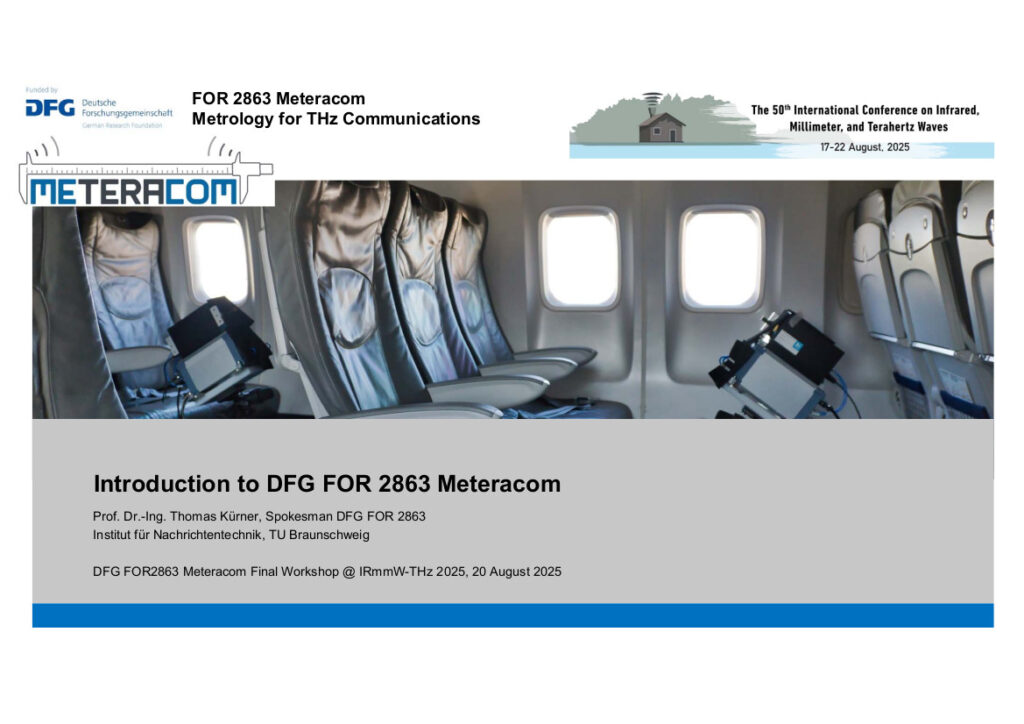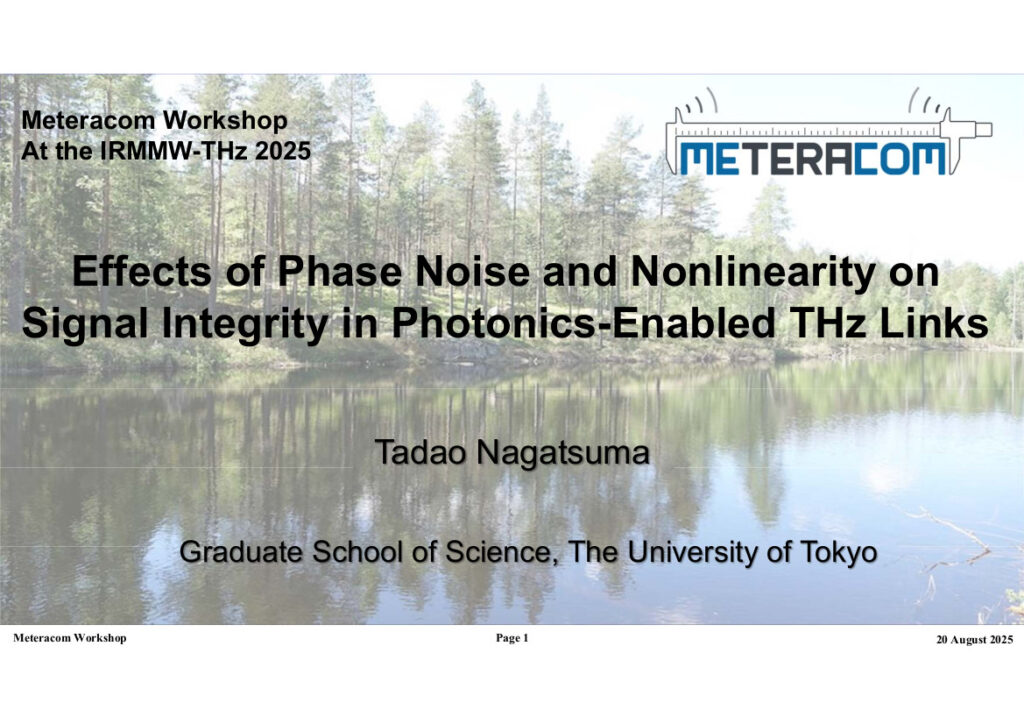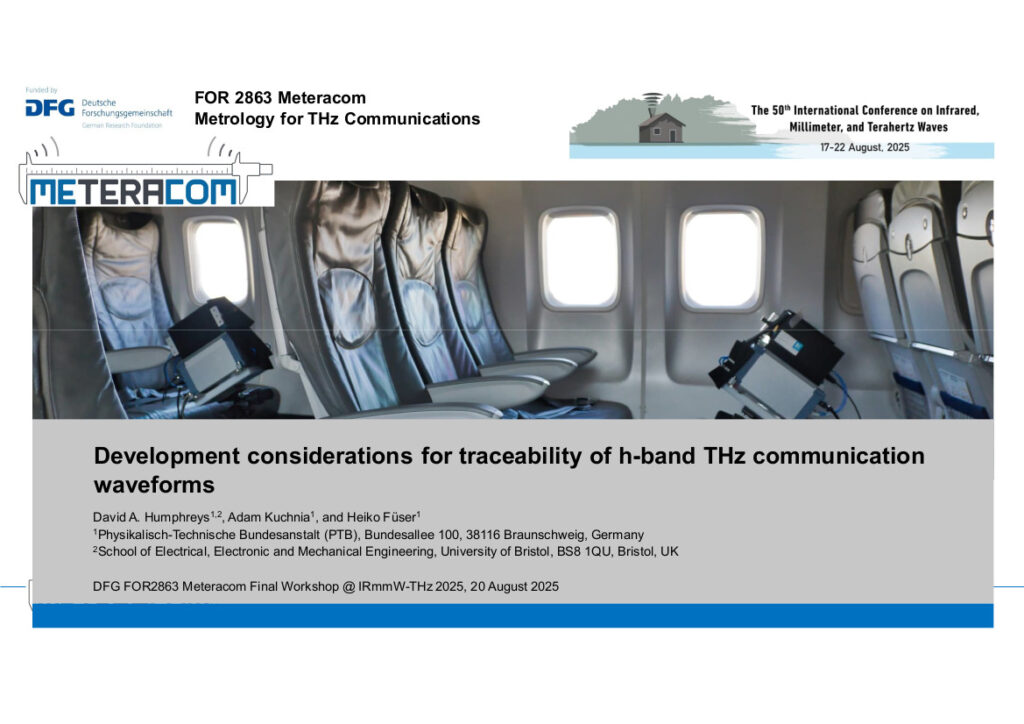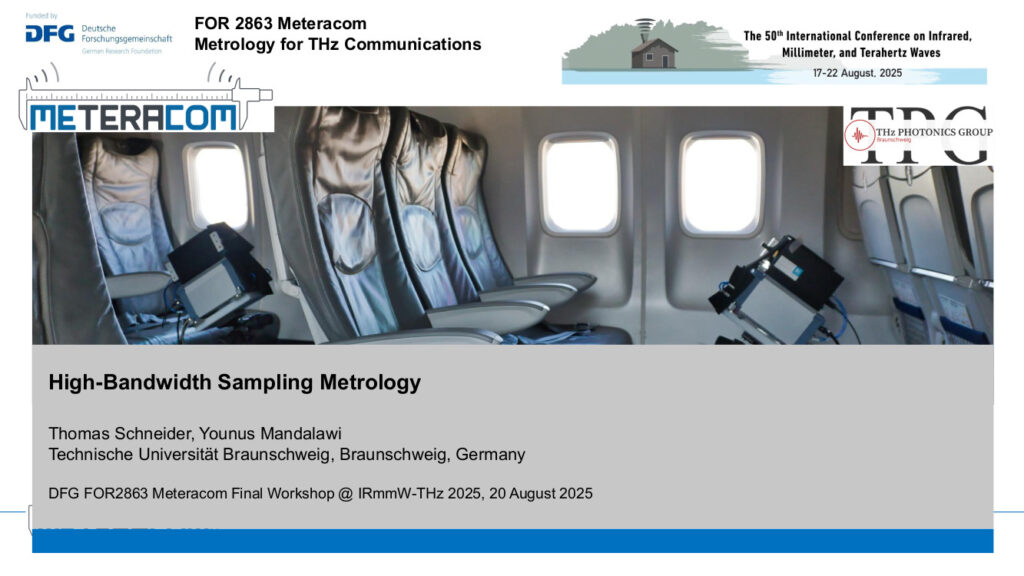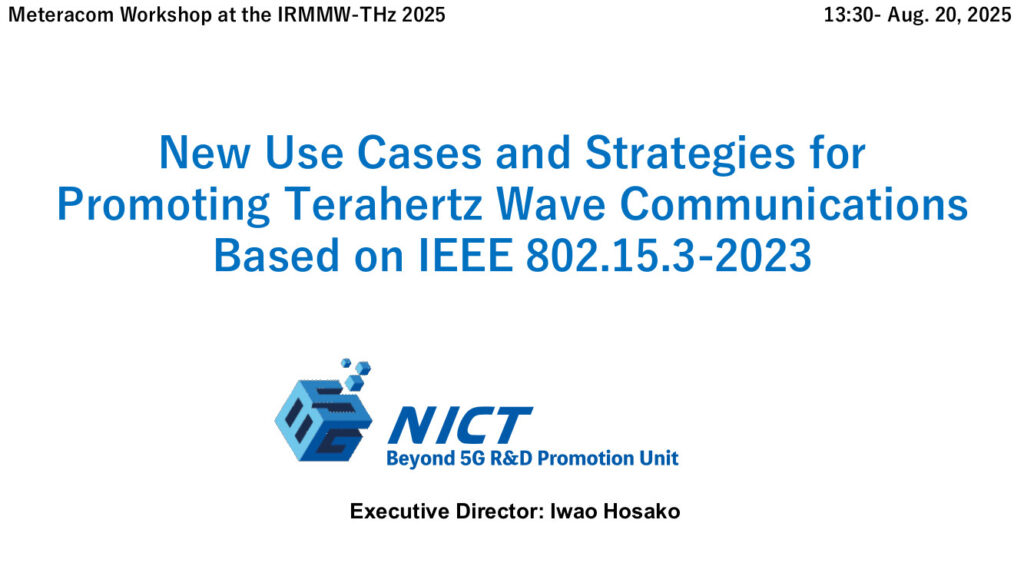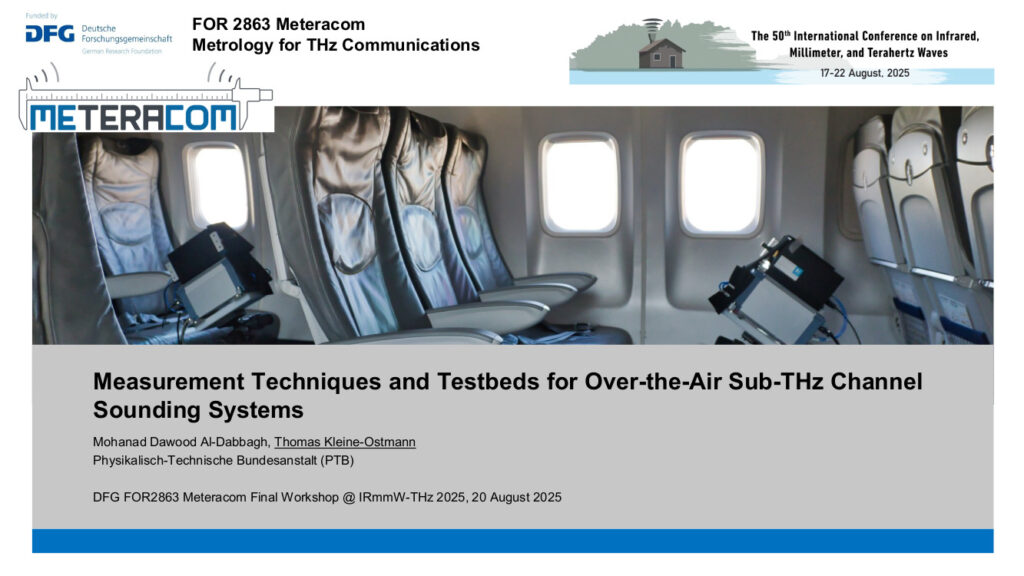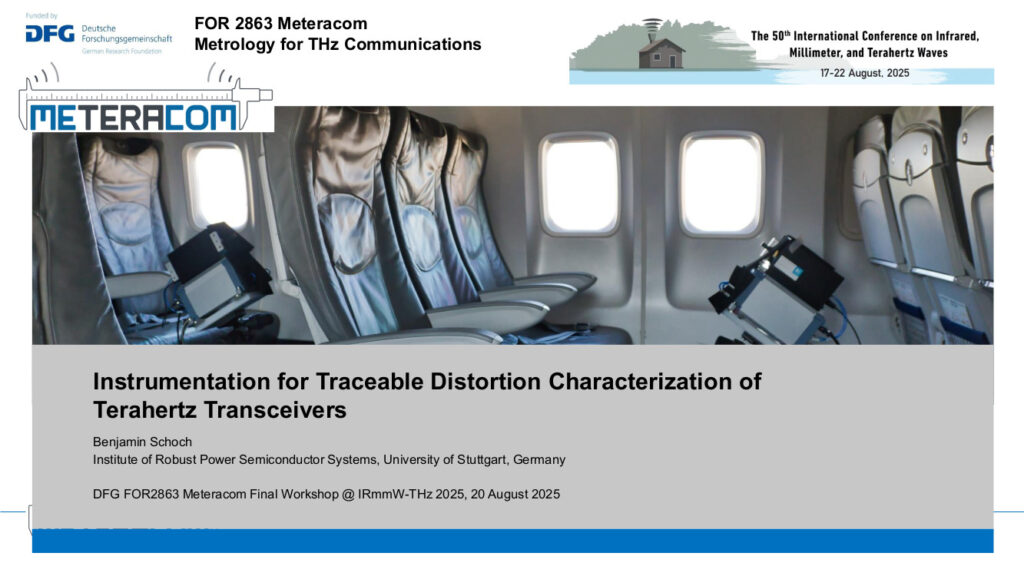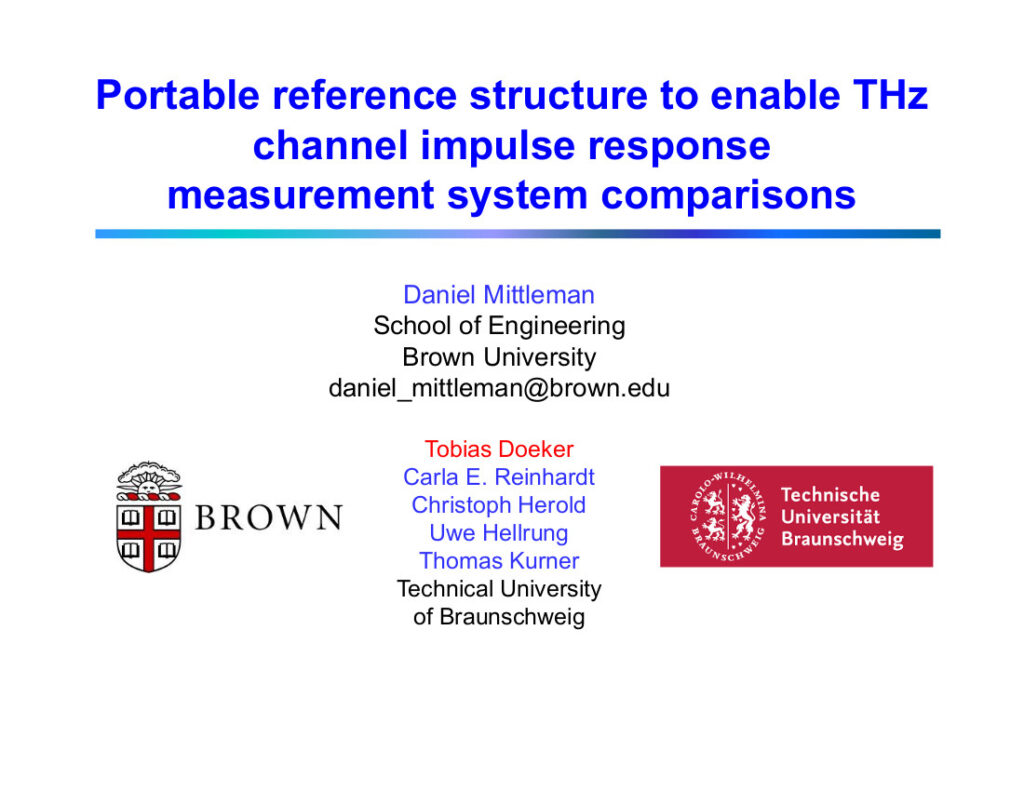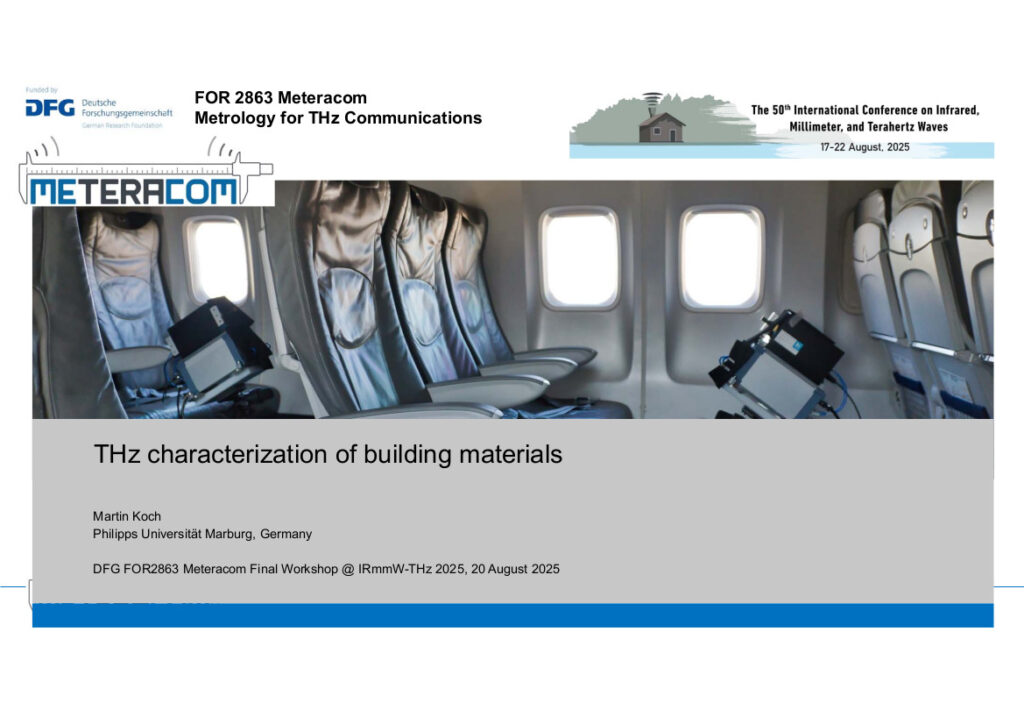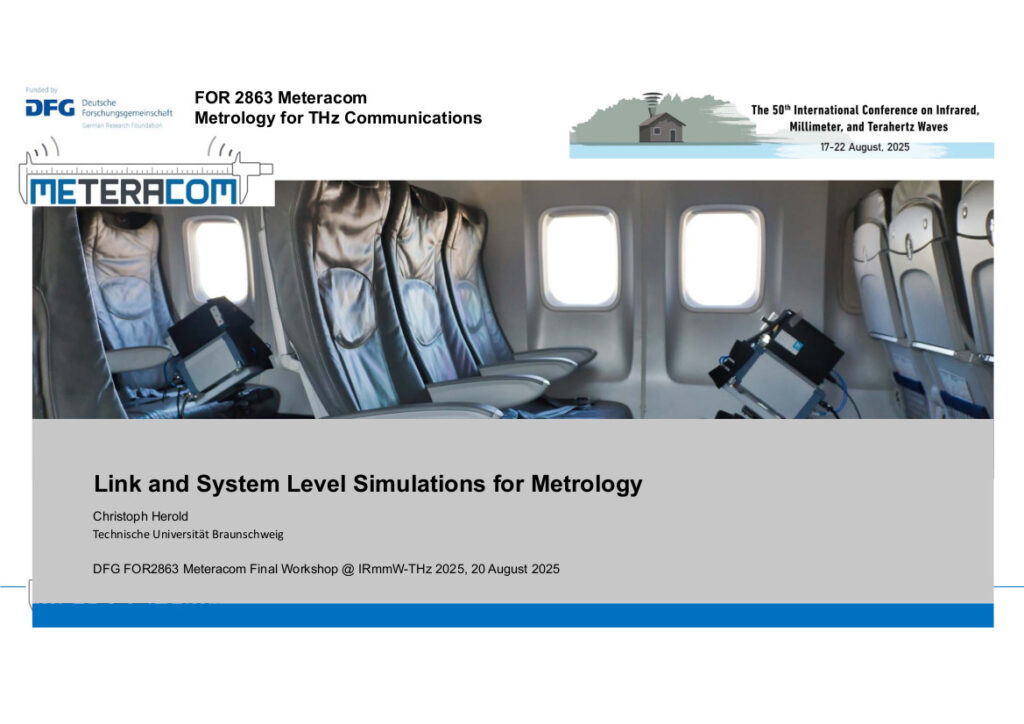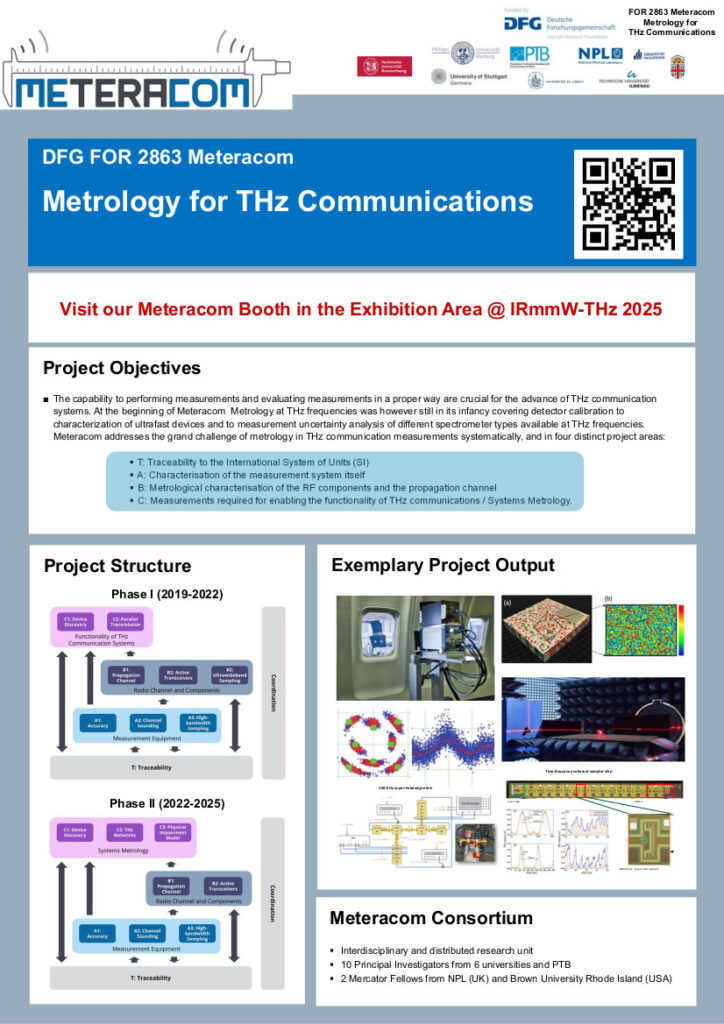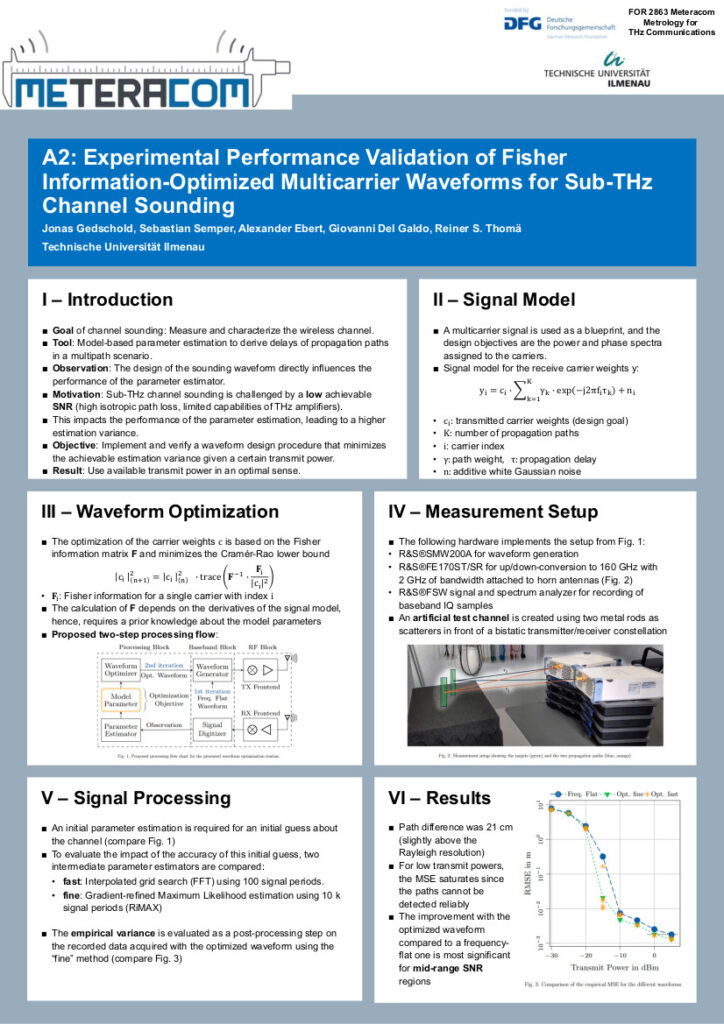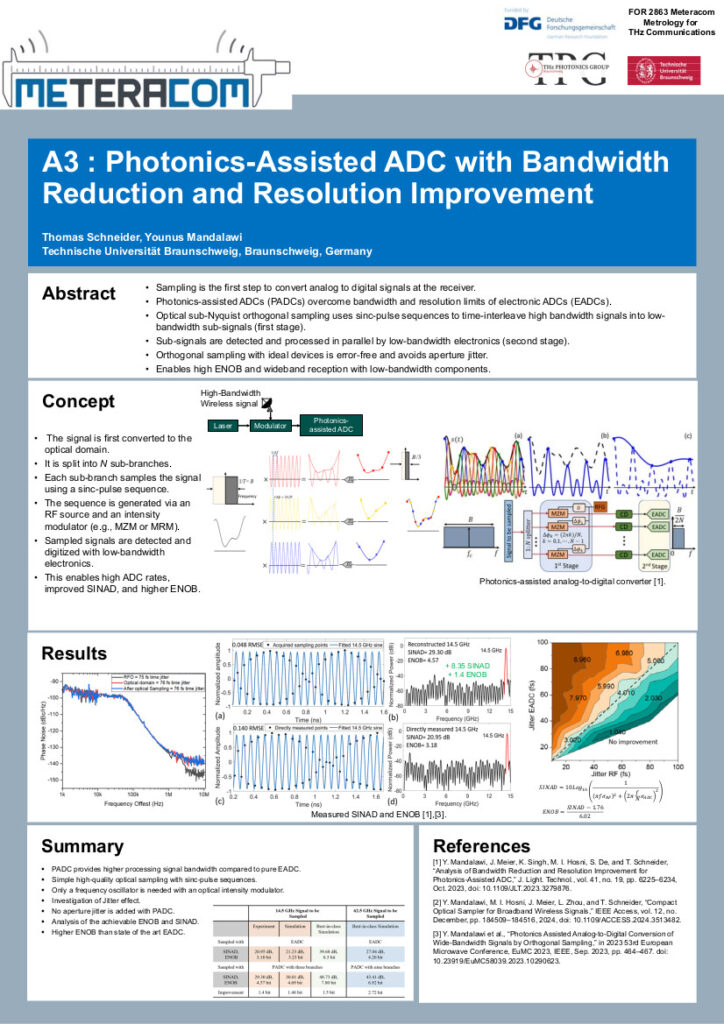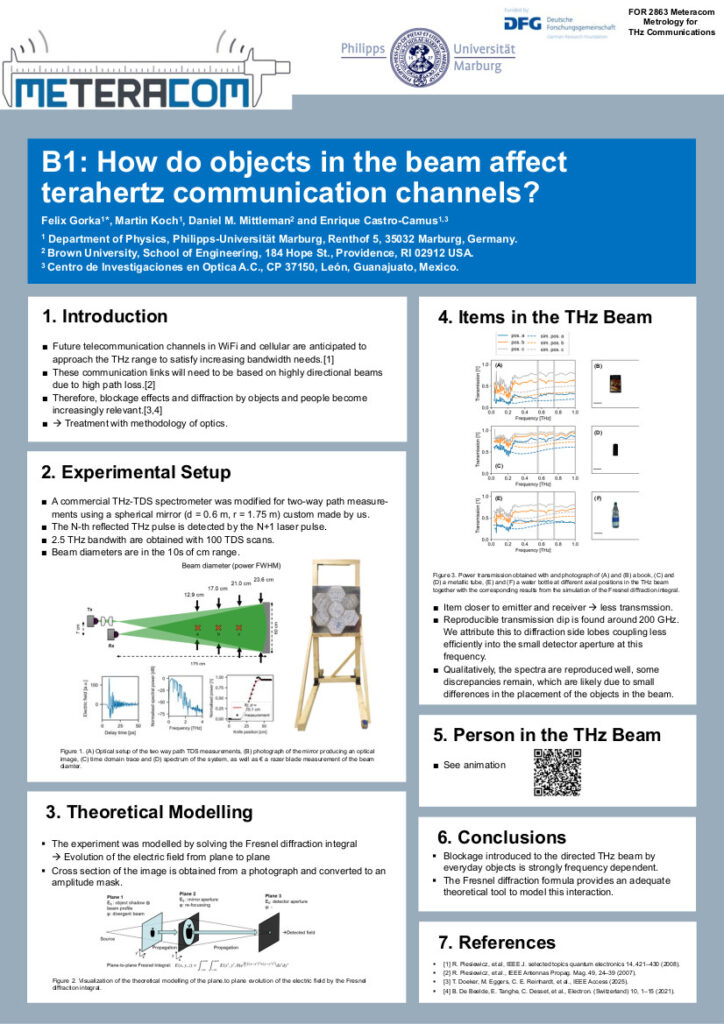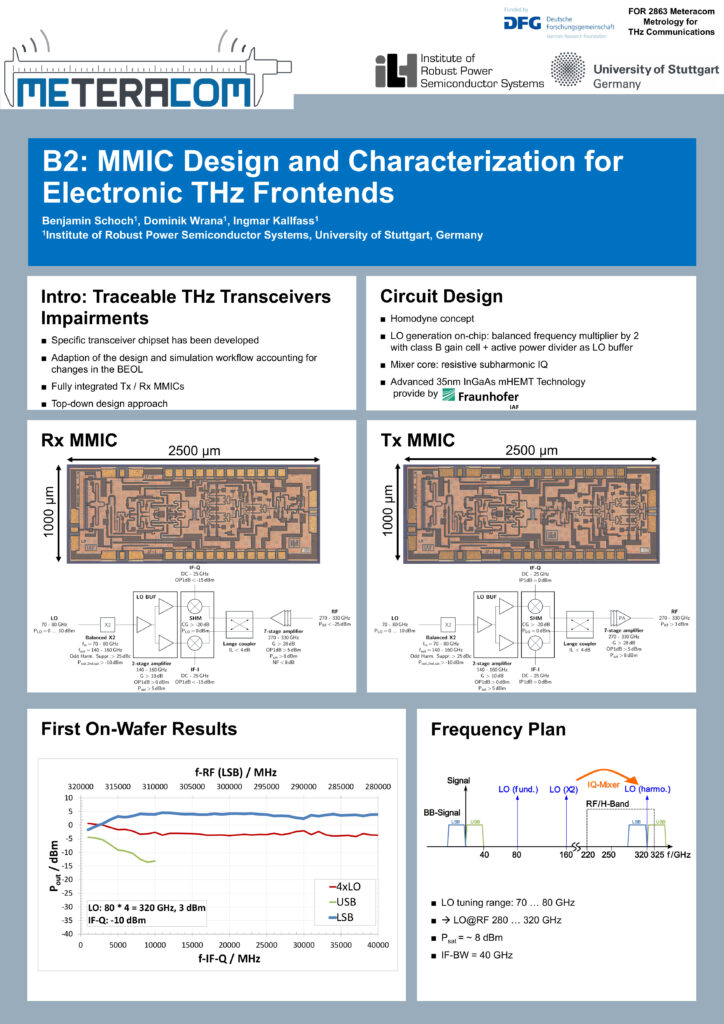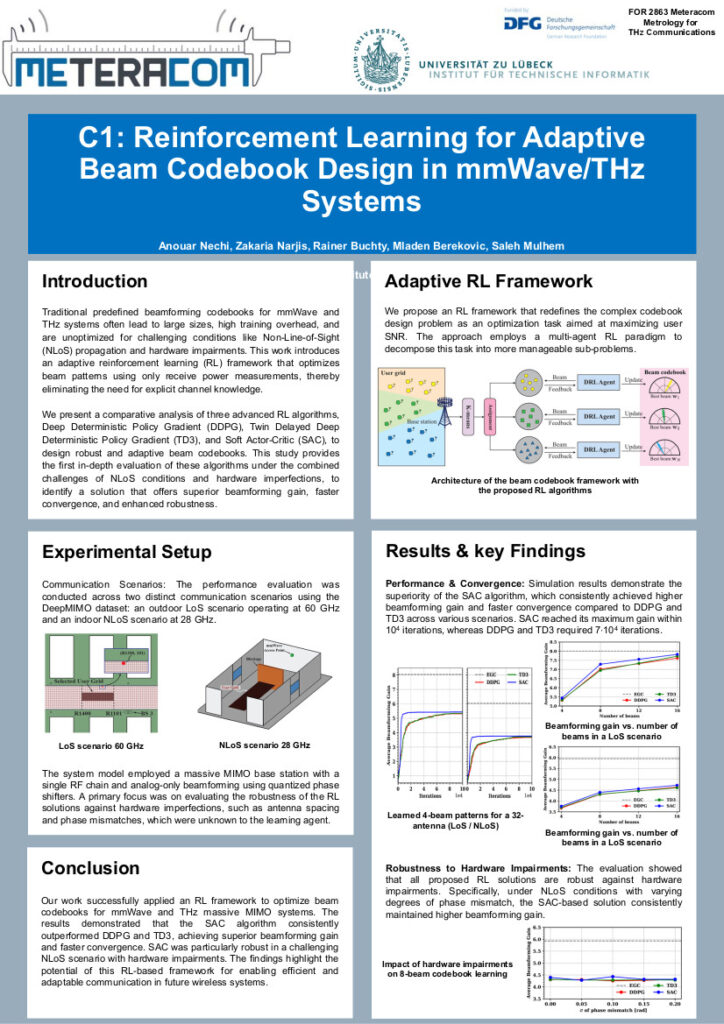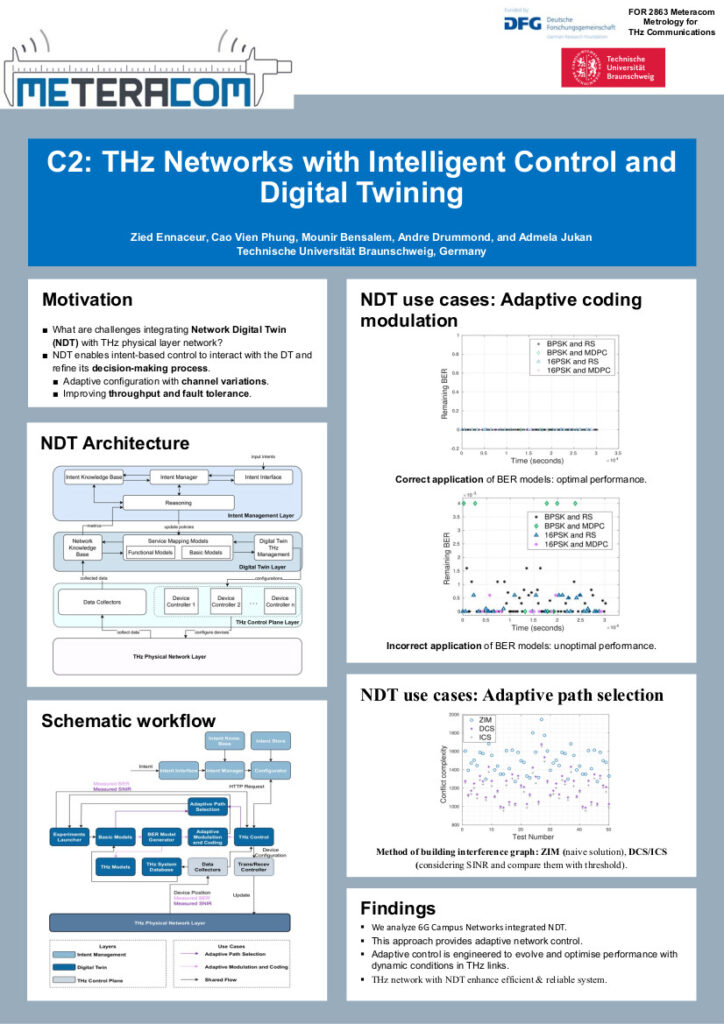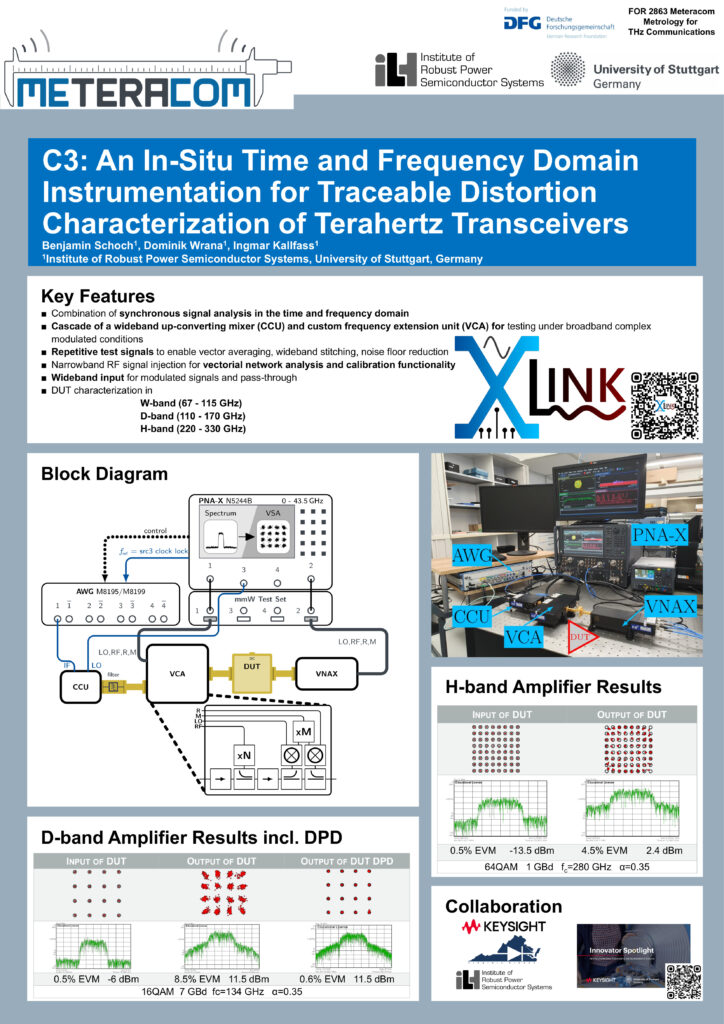On August 20, 2025, the Meteracom consortium will present a Workshop at the IRMMW-THz 2025 in Epsoo (room M1), Finland.
Workshop Program – August 20, 2025
10:00 – 11:30 h
Thomas Kürner, Technische Universität Braunschweig, Germany:
Introduction to DFG FOR 2863 Meteracom
This contribution provides an overview of the DFG FOR 2863 Research Unit Meteracom (Metrology for THz Communications), which has run from 2019 to 2025. Meteracom has addressed the grand challenge of metrology in THz communication measurements systematically, and performed research in four distinct project areas: (i) Traceability to the International System of Units (SI); (ii) Characterisation of the measurement itself; (iii) Metrological characterisation of the RF components and the propagation channel; (iv) Measurements required for enabling the functionality of THz communications. This overview provides the motivation for the project, its structure and highlights some major outcomes.
Invited Keynote:
Tadao Nagatsuma, The University of Tokyo, Japan:
Effects of Phase Noise and Nonlinearity on Signal Integrity in Photonics-Enabled THz Links
With the growing demand for ultra-high-speed wireless communications beyond 5G, transceiver technologies operating above 100 GHz—particularly in the sub-terahertz range (100–300 GHz)—have attracted significant attention. These frequency bands offer the potential to achieve data rates from 100 Gbit/s up to 1 Tbit/s. To fully exploit this potential, recent research has explored wireless links that integrate both electronic and photonic technologies. In this presentation, we share experimental results addressing two key challenges that impact the signal integrity and overall performance of photonics-based wireless links: oscillator phase noise and nonlinear distortion caused by photodiode saturation. We also present effective solutions to mitigate these issues. As a result, we demonstrate wireless transmission exceeding 200 Gbit/s with high communication quality.
David Humphreys:
Development Considerations for a THz Waveform Traceability for H-band Communication
We discuss the requirements for a free-space traceable reference operating at 100 GHz and 300 GHz. The initial concept, based on Electro-optic sampling/photoconductive switch systems used as primary waveform standards provides a route to traceability, as opposed to the closed-loop VNA approach. We discuss the design choices arising from Modelling of existing prototype device, which provided „proof of principle“ and current measurement and modelling results. Traditional EOS systems use a simple impulse stimulus, but communication systems require a modulated signal as this affects the amplifier operating point. We discuss the constraints and limitations when measuring modulated waveforms.
Younus Mandalawi, Technische Universität Braunschweig, Germany:
Results of Metrology of High-bandwidth Sampling Systems
At the receiver, sampling is the first step to convert an analog signal into a digital signal. To keep pace with increasing data rates photonics-assisted analog-to-digital converter (PADC) is a promising alternative to circumvent the bandwidth and resolution bottleneck in a pure electronic analog-to-digital converter (EADC). Here, we analyze optical sub-Nyquist orthogonal sampling with sinc-pulse sequences for the time-interleaving of high-bandwidth input signals into parallel low-bandwidth sub-signals (first sampling stage). These sub-signals are then detected and further processed with low-bandwidth electronic devices in parallel branches (second sampling stage). Orthogonal sampling with ideal devices is error-free. Additionally, in contrast to electronic sample and hold circuits, the first sampling stage does not add aperture jitter. This leads to high improvement in the bit effective number of bits (ENOB) while providing high-bandwidth signal reception with low-bandwidth devices.
13:30 – 15:00 h
Invited Keynote:
Iwao Hosako, National Institute of Information and Communications Technology (NICT), Japan:
New Use Cases and Strategies for Promoting Terahertz Wave Communications Based on IEEE 802.15.3-2023
A mobile-centric ecosystem is emerging that integrates technologies such as NTN, Wi-Fi, and Bluetooth. Although THz communication was initially conceived for 6G, it is now anticipated to be adopted in subsequent phases (Day 2). Future society will be shaped by cyber-physical systems, in which continuous interaction between digital twins and the physical world drives intelligent functions. High-speed THz links are ideal for uploading rich sensor data to the cloud for multimodal learning, which is difficult to achieve with conventional mobile systems. Consequently, THz links are increasingly recognized as a complementary uplink channel for mobile networks. IEEE 802.15.3e/3d standards enable the scalable deployment of THz technology from 60 to 300 GHz. These standards feature ultra-fast, ultra-short link establishment times and support mobility on both ends.
Thomas Kleine-Ostmann, Physikalisch-Technische Bundesanstalt, Germany:
Measurement Techniques and Testbeds for Over-the-Air Sub-THz Channel Sounding Systems
We discuss the measurement artefacts used to verify the performance of different channel-sounding systems. Some artefacts were selected based on waveguide fabrication and waveguide cascades of attenuators, while others were based on over-the-air (OTA) measurements under a controlled environment. We will discuss the principle behind each of the selected artefacts and their setup configurations, including considerations for equipment calibration and environmental factors. The measurements examine single and multipath reflections. We discuss the influence of antennas on the measurement scenarios and the uncertainties related to different error terms we addressed during our measurement investigations.
Benjamin Schoch, University of Stuttgart, Germany:
Instrumentation for Traceable Distortion Characterization of Terahertz Transceivers
Developing and optimizing electronic analog front ends is particularly challenging at terahertz frequencies. A wide range of circuit- and system-level impairments, such as phase noise and nonlinearity, can severely degrade signal quality. Addressing these challenges requires a thorough sensitivity analysis to assess the impact of these impairments on system performance. This talk will present an innovative measurement platform that combines time- and frequency-domain analysis to evaluate key sources of performance degradation, which are essential for both MMIC characterization and system-level evaluation.
Daniel M. Mittleman, Brown University, USA:
Portable Reference Structure Enabling THz Channel Impulse Response Measurement System Comparisons
In order to make channel measurements from different groups and measuring devices available to the scientific community, it is necessary to be able to establish comparability between the measurements. In this talk, we present a possible realization of a portable reference structure that provides defined and reproducible results. In addition, first results with channel sounder and TDS-based measurement data will be presented, highlighting similarities and differences as well as advantages and disadvantages of the two approaches.
15:30 – 17:00 h
Martin Koch, Philipps University of Marburg, Germany:
THz Characterisation of Building Materials
This presentation will begin by explaining why the characterization of materials found in indoor environments is interesting. Not only are the reflective properties of walls or furniture surfaces relevant, but also how they scatter THz waves. Scattering can cause the signal intensity of indirect communication threads to be reduced in the desired direction and signals to be sent in unintended directions. As part of Meteracom, a variety of building materials were examined using a fiber-coupled commercial THz time-domain spectrometer, which also employed a goniometer that allows angle-dependent measurements.
Tobias Doeker, Technische Universität Braunschweig, Germany:
Device Discovery and Beam Tracking
Precise alignment between the transmitter and receiver is crucial for future wireless communication systems that use low THz frequencies because high-directional antennas are necessary. During the Meteracom project, we developed two new concepts for antenna alignment in wireless communication systems, which will be presented briefly in this presentation. The first concept combines device discovery with compressed sensing, and the second uses information about changes in path gain and antenna diagrams to track movement and realign the transmitter and receiver.
Christoph Herold, Technische Universität Braunschweig, Germany:
Link- and System Level Simulation for Metrology
Link and system level simulations play a vital role during the research and development of communication systems. This talk will give an overview of requirements and use cases for simulation tools in THz communications research. Specific examples of studies and investigations carried out during the Meteracom project using the simulation framework SiMoNe will be shown and discussed. These examples include simulations of the channelization concepts, modulation schemes and the generation of machine-learning training data.
Panel Discussion:
Thomas Kürner (Moderator)
Panelists: Tadao Nagatsuma, Iwao Hosako, Daniel M. Mittleman, David Humphreys, Thomas Kleine-Ostmann, and Martin Koch

